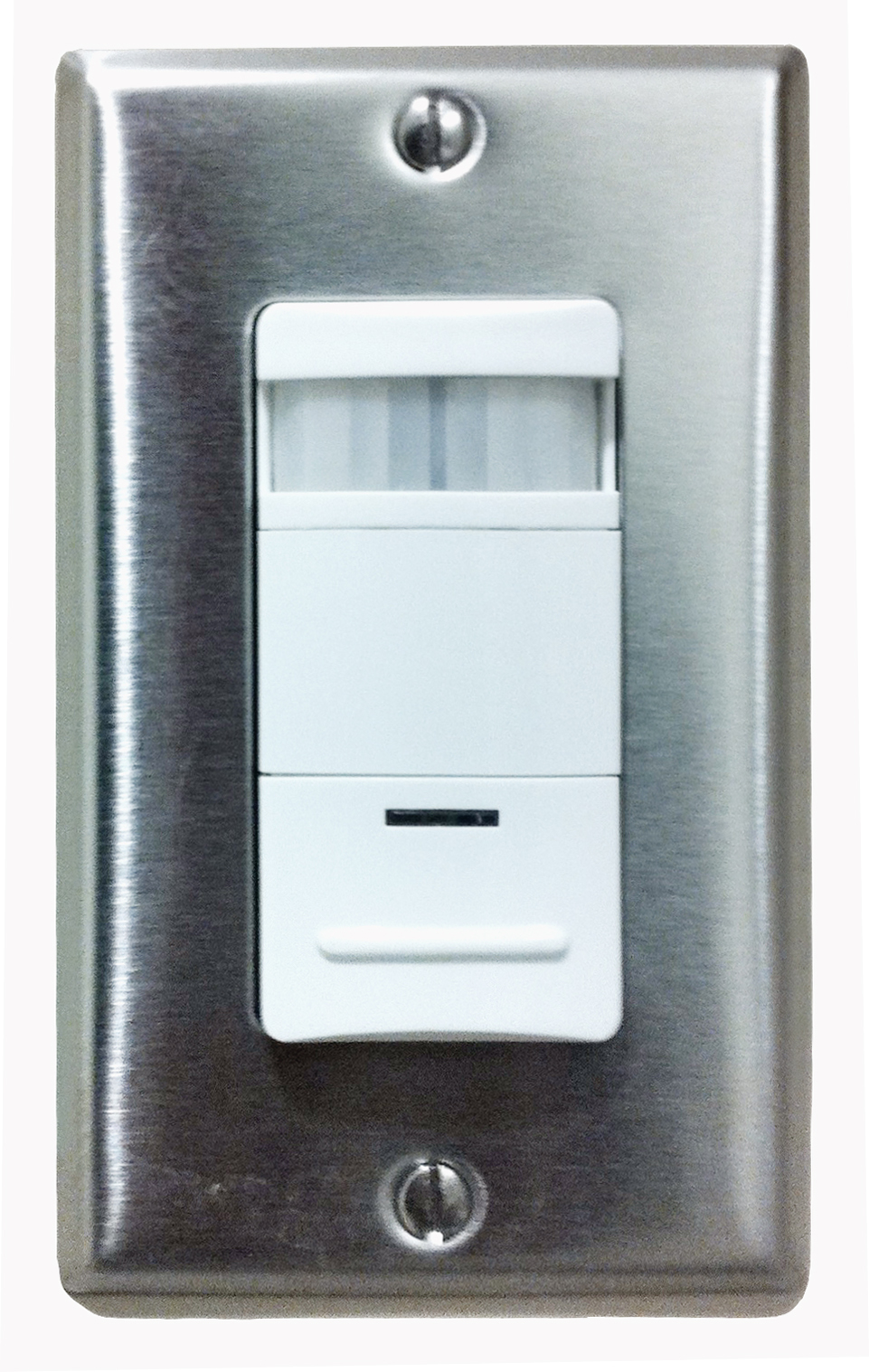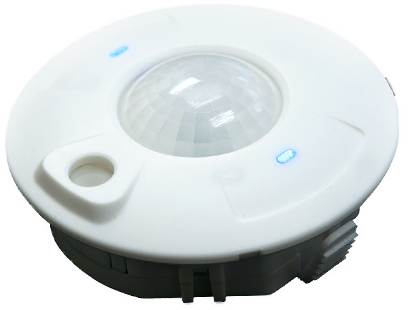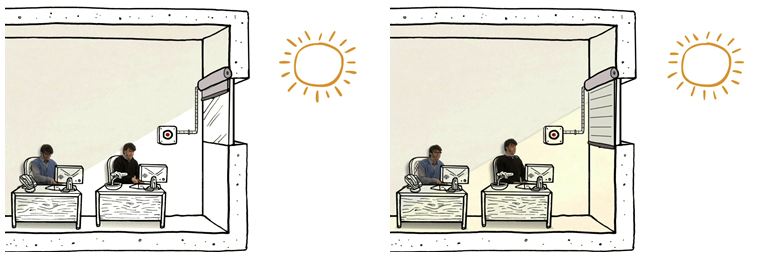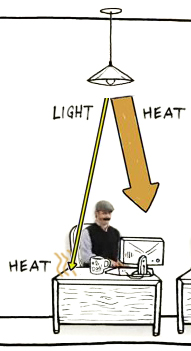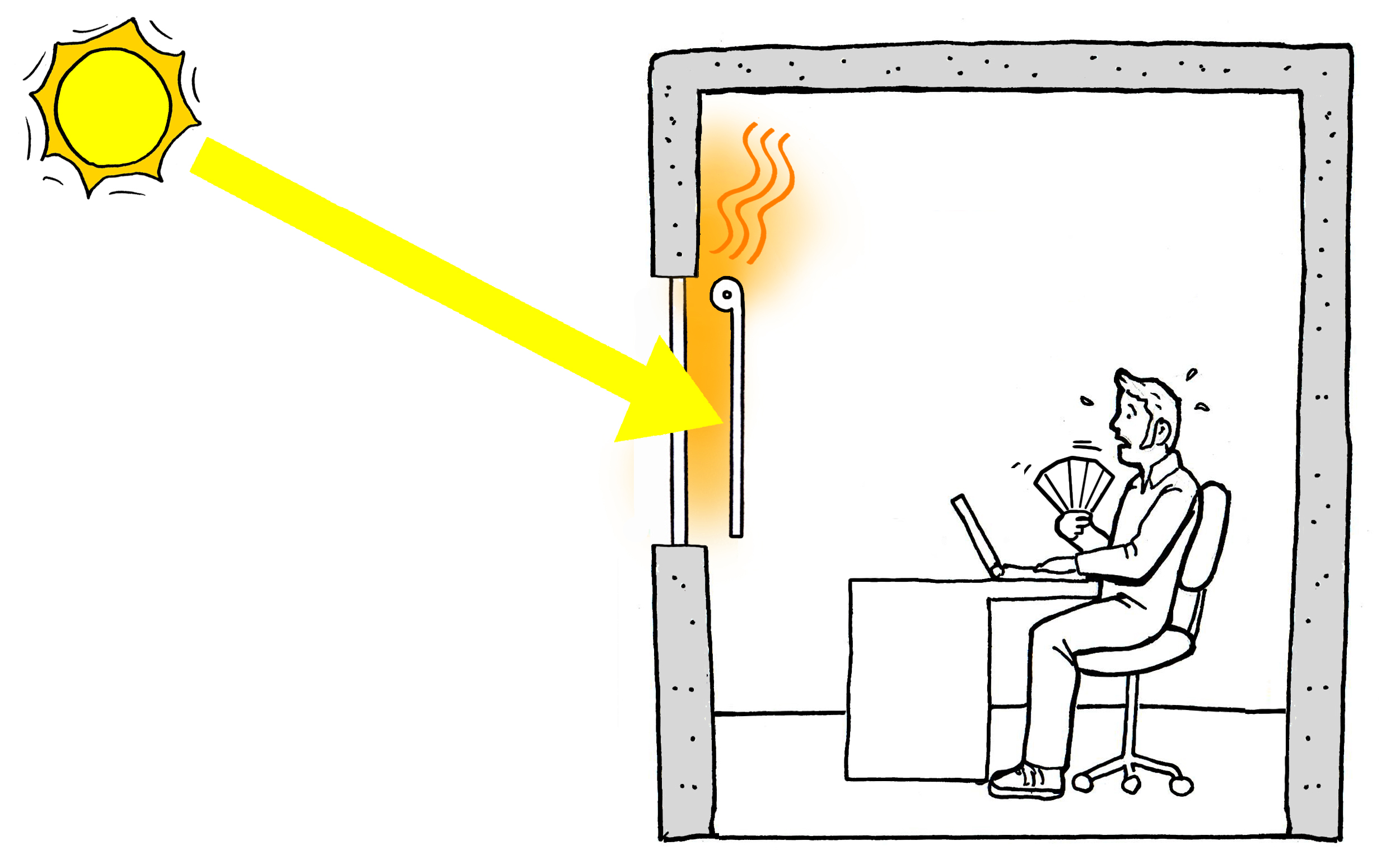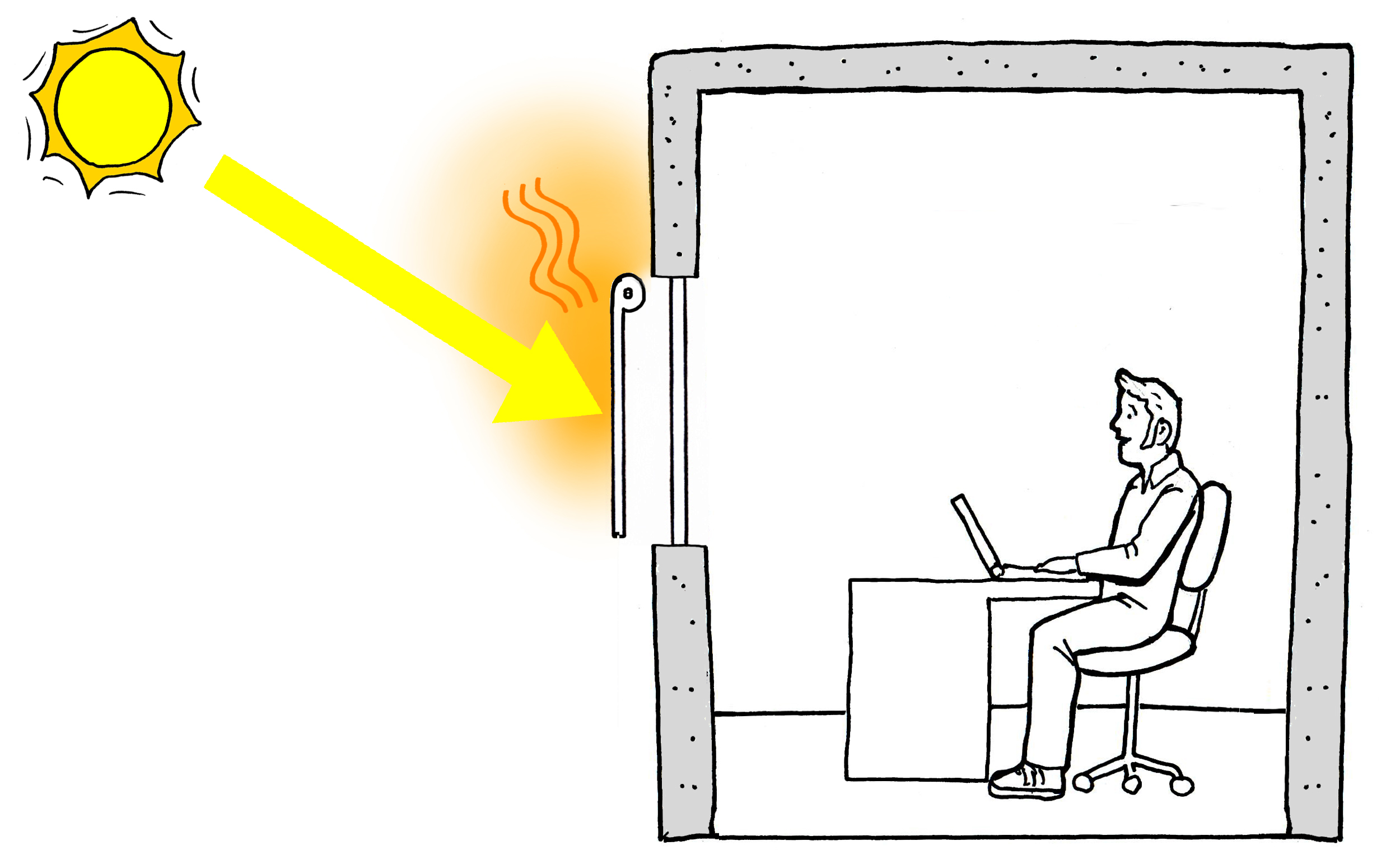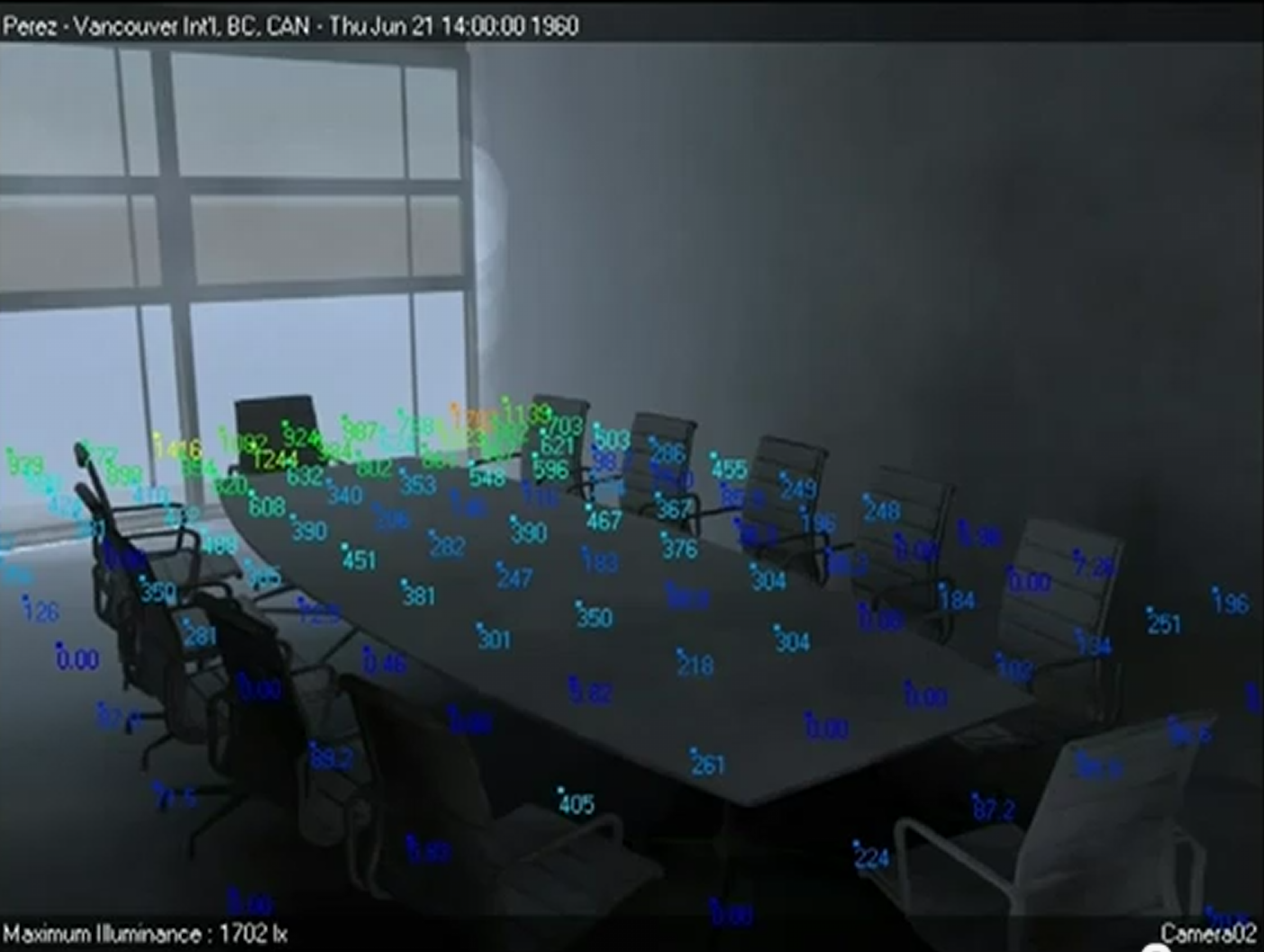You are here
Lighting and daylighting controls are systems that adjust the amount of natural and artificial light in a room, based on its brightness, occupancy, and sometimes other factors.
Good controls are critical to lighting design that incorporates both daylight and artificial light. They can improve both visual and thermal comfort while significantly decreasing energy use. For instance, occupancy-based shutoff alone can save up to 38% of lighting energy for private offices, 50% in conference rooms, and 58% for classrooms.
Successful design of lighting control is measured by testing visual comfort in the room during occupied times, and measuring the daily or monthly lighting energy use. The less energy required while still achieving comfort, the better. Controls systems are also measured by their reliability and ease of use for occupants and operations staff.
Lighting Controls
The simplest way to reduce the amount of energy consumed by lighting systems is to turn lights off whenever they are not required. Most people simply do not shut off lights when they leave rooms. One solution to this problem is occupancy sensors, which sense the presence of people in a space using infrared and/or ultrasonic motion sensors. These switches are appropriate in spaces where people pass in and out often, such as private offices, restrooms, storage areas, and conference rooms.
Occupancy sensor with a manual override switch
Lighting controls can also dim lights when there is plenty of daylight. Such systems can save 20-60% of lighting energy1. To respond appropriately as the distribution of sunlight in the room changes through the day, these systems require brightness sensors to be placed strategically in the room., Different sensors may actuate different lighting zones.
Daylight brightness sensor
Occupancy sensors and brightness sensors can be individual switches for individual lights or inputs to larger control systems. The most highly-optimized lighting control systems combine multiple sensors and a logic processor to control lights. These systems can often save 40% of overall lighting energy; sometimes even far more.
Shading Controls
Daylight can be valuable to give spaces good visual comfort using no electricity, but sometimes the sun is too bright. Building occupants can open and close shades, or adjust blinds, to tune light levels to their comfort; however, people often don't operate such systems to their optimal effectiveness, particularly in shared spaces.
Motorized shades and blinds can be controlled by timers, brightness sensors, or other inputs. These can close shades at sunset on western walls to avoid glare, or tilt Venetian blinds to 60% closed at the brightest times of day while tilting them to full openness at dimmer times.
A brightness sensor detects excess sunlight, and lowers a shade to avoid glare
The simplest and least expensive control systems are timers; sophisticated ones can be set to actuate shades at different times of day throughout the year, to compensate for changes in the sun's path from winter to summer. Systems based on brightness sensors are more expensive, but can also adjust for cloudy days and shadows from surrounding buildings, trees, or other objects.
As with lighting controls, shading controls can be individual units or can be part of a larger system; the latter is most effective at maximizing visual comfort while minimizing energy use.
Lighting Controls for Thermal Comfort
Saving lighting energy also saves cooling energy in warm climates, because every watt of electricity used by lighting systems turns into a watt of heat that must be removed from the room. Part of this is from the inefficiency of lighting equipment, the rest is from the conversion of light into heat when it is absorbed by the materials it illuminates. Thus, reducing lighting energy use also improves passive thermal comfort.
Lighting energy becomes heat, both by inefficiency and by absorption
In hot climates, preventing excess solar heat gain during the afternoon can be more important than bringing in natural light. Even when windows have low solar heat gain coefficients, they do still let in heat from the sun. Motorized shades can also be used to avoid excess gain and translucent shades may even still allow sufficient daylight.
In cold climates with bright sunlight, insulated shutters may open during the day to allow the sun's heat in through high-SHGC windows, but shut at night to avoid heat loss through the same windows.
When thermal comfort is a priority for shades, external shades and shutters are more useful than interior ones, as they prevent the sun's heat from ever getting inside the room, rather than trying to reflect it back out once it has come in.
Internal shades block some heat, but much heat is still trapped inside
External shades and shutters block heat more completely than internal ones
1 See M.R. Brambley et. al. Advanced Sensors and Controls for Building Applications: Market Assessment and Potential R&D Pathways, Prepared for the U.S. Department of Energy, April 2005.

